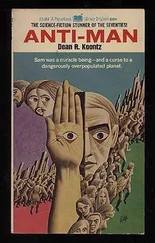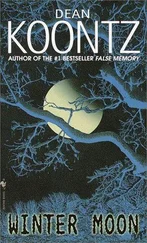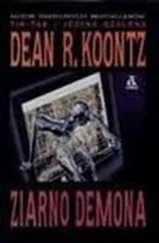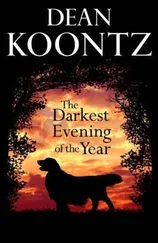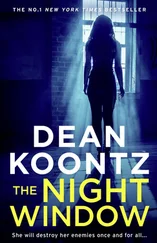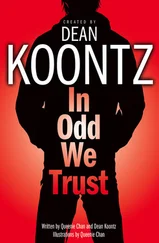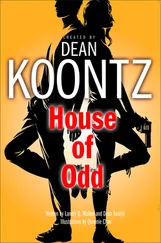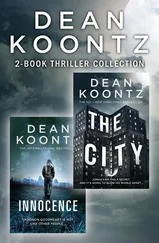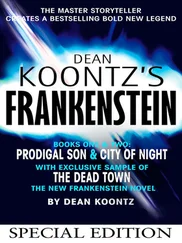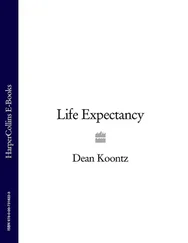“Kook conference?”
“That’s what I call it. Bunch of our best and brightest getting together to talk about the benefits of reducing human population to five hundred million.”
“What’s that-six billion people gone? How do they figure to make that happen?”
“Oh,” Zane said, “from what I read, they’ve got a slew of ways figured out to get the job done. Their problem is selling the program to the rest of us.”
At an intersection, a few sheets of a newspaper were airborne on the breeze, billowing to full spreads, gliding slowly in a wide spiral, their flight as ponderous as that of albatrosses circling in search of doomed ships.
“Shouldn’t we wait a couple hours, until after dark?” Ryan wondered.
“Always looks less suspicious to go in during daylight if you can,” Zane said. “Straight on and bold is better.”
The neighborhood appeared even more conventional in daylight than it had been at night: simple ranch houses, gliders and swings on the porches, well-kept yards, basketball hoops above garage doors, an American flag here and there.
Dr. Death’s house looked as ordinary as any residence on the street-which made Ryan wonder what might be in some of the other houses.
As Zane swung the Mercedes into the driveway, the garage door rose. He drove inside, where earlier he had dropped off Cathy Sienna and where now she stood at the connecting door to the house.
As the garage door rolled down, she greeted Ryan with a professional smile and a handshake. He had forgotten how direct her stare was: granite-gray eyes so steady that she seemed to challenge the world to show her anything that could make her flinch.
She said, “I didn’t realize you enjoyed yourself so much the last time.”
“It wasn’t as much fun as Disneyland, but it was memorable.”
“This Barghest,” George Zane said, “gives crazy a bad name.”
In the kitchen, Ryan explained that he wanted them to look for places in which Dr. Death might have taken special pains to hide his files of assisted suicides. Trapdoors under carpets, false backs in cabinets, that sort of thing.
Meanwhile, he would be once more reviewing the ring binders full of photographs of dead faces.
Judging by the portion of the house that Ryan passed through, the connoisseur had not added to his macabre collection; it was a relief to discover the home office still contained no cadaver art.
Evidently, even Barghest needed a refuge where dead eyes were not fixed upon him.
A third ring binder stood on the bookshelf beside the two that had been there sixteen months earlier. Ryan took it down first and stood paging quickly through it, half expecting to be startled by a familiar face.
Of the eleven recent photographs in the new album, the oldest appeared to be of a man in his seventies. The youngest showed a fair-haired boy with delicate features, his blue eyes taped open, no older than seven or eight.
A windowpane rattled softly and rising wind soughed in the eaves. Something fluttered in the attic, perhaps a roosting bird.
Eleven assisted deaths in sixteen months. This ferrier had poled across the Styx with some regularity.
Ryan returned the album to the bookshelf, retrieved the original two ring binders, and carried them to the desk.
Having gone directly to the shelves on entering the room, he had not noticed the familiar book on the desk. A copy of Samantha’s novel lay facedown.
Staring at Sam’s jacket photo, Ryan settled in the office chair. He hesitated to inspect the book.
When finally he picked it up, he turned to the half-title page, then to the full-title. He was relieved to find no inscription from the author, no signature.
Paging through, he discovered notations in the margins, petty criticisms, some of them vulgar enough to sicken him. He read only a few before closing the book in disgust.
Understandably, Spencer Barghest would have been interested enough in the novel to buy a copy. He’d been in a relationship with Sam’s mother for at least six years. And he had in some way assisted her twin sister, Teresa, out of this world, which was either a noble act of compassion or cold-blooded murder, depending on your point of view.
The point of view that mattered most was Teresa’s, but given the shortage of reliable mediums these days, the authorities were not likely to obtain a deposition from her.
Putting the book aside, Ryan turned next to the first ring binder. Sixteen months earlier, none of these faces in this album had meant anything to him. He was curious to see if that would be the case again or if he might have overlooked something the first time.
Perhaps his personal journey over the past year had sharpened his sensitivity to suffering, because these faces affected him more profoundly than before. They remained death portraits, but on this second viewing, he was more poignantly aware that they were people, even in death each of their faces alive with character.
If he had missed anything important the first time through the binder, he missed it again-and did not have the courage to review it a third time.
The second album was the one from which he had extracted the photo of Teresa that had obsessed him. He had sat here, mesmerized by the reflections in her eyes-until Cathy Sienna had stepped in from the hall to say the house was giving her the creeps.
Ryan had agreed and, assuming that the discovery of Teresa’s death portrait was the lodestone that had drawn him here, he had closed the ring binder and returned it to the shelf.
Now he found the third plastic sleeve still empty. Perhaps Barghest had not discovered that Teresa’s photo was missing.
Twelve sleeves farther into the album, he came across someone he knew. He closed his eyes in disbelief.
If it belonged in this sick collection at all, surely this face should be in the third ring binder, the new one, among the portraits of the people to whom Barghest had evidently ministered since Ryan’s previous visit. Impossible that it belonged with the faces of those who had been unfortunate enough to come under his care years ago.
Heart knocking harder than it had when Lily’s sister had cut him in the parking lot, Ryan opened his eyes and found that he had not mistakenly identified the woman in the photograph.
I’m here. I’m watchin’ over you. You’ll be just fine.
The smooth dark skin.
Don’t hold your breath, honey.
The emerald-green eyes.
You hear him, don’t you, child?
Twelve sleeves after Teresa, who had been dead six years, was Ismay Clemm, one of the two cardiology nurses who had assisted Dr. Gupta with the myocardial biopsy.
The rising wind choked and wheezed in the eaves, as if words were caught in its throat, and in frustration thrashed the branches of the melaleucas beyond the study window.
Sixteen months ago, sitting in this room, Ryan had been certain he stood at the threshold of a discovery that would strip bare the lurid details of the conspiracy against him. Now the same conviction gripped him.
The first time around, upon finding Teresa’s photo, he thought he had before him the essential piece of the puzzle. Already half obsessed with the perfection of Samantha’s face, he was at once riveted by its perfect duplicate. Seeing the six-year-old death portrait mere hours after having risen from the bed of a lover whose countenance, as she slept, matched the dead face detail for detail, Ryan had been struck by an intense awareness of the eternal presence of death in life that at first disoriented him and then led him to focus on Teresa as the hub from which all the recent weirdness had radiated.
Teresa Reach, however, could neither complete the puzzle nor even contribute to its solution. She was not part of the web that unknown others seemed to be spinning around Ryan.
Читать дальше
Конец ознакомительного отрывка
Купить книгу

